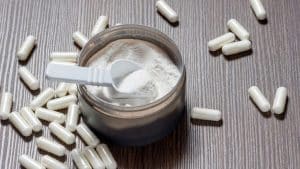Not all vegetables are created equal in the grand game of healthy nutrition. Most of them have at least one vitamin or mineral, but there are some that go far beyond and tend to top lists of the best foods to eat. Cruciferous vegetables fall into that category, but you may not have heard of one of their compounds: sulforaphane. Is this a compound you want to use to supplement your diet (https://longevity.technology/lifestyle/sulforaphane-benefits-side-effects-dosage-foods-uses/)?
When we say cruciferous vegetables, we mean those from the family known as brassicaceae. Popular examples include broccoli, cauliflower and cabbage. A perhaps less popular option is Brussels sprouts, but in general, we’re talking leafy greens. They’re known for high levels of fiber, vitamin C and a range of other nutrients. Sulforaphane is a little less appreciated.
We’ve been researching sulforaphane since the 1990s. It has a rather interesting mechanism. Rather than starting in an active state, it has to be triggered through another compound called glucoraphanin. Glucoraphanin converts to sulforaphane when a cruciferous vegetable is broken down, whether it’s through chopping or chewing.
Sulforaphane is an antioxidant with anti-inflammatory properties, and it’s notorious for its potential ability to reduce cancer risk. It does this by activating the Nrf2 pathway and stimulating the enzymes that defend us against toxins, going far beyond the general free radical combatting role of most antioxidants. Its impact can be enhanced when combined with other nutrients such as selenium. Attention has also been paid to how it can modify gene expression without altering DNA, which has implications when treating everything from heart disease to Alzheimer’s.
There aren’t official guidelines on a daily recommended sulforaphane amount, but between 2.5 and 3.5 ounces of sprouts provides a good dose. Factors like age, sex and health conditions can impact effectiveness.
The most common side effects of too much sulforaphane are gastrointestinal, such as bloating, gas and diarrhea, but others may experience allergic reactions or negative interactions with other medication. Too much may lower your body temperature, impair your motor skills or cause sedation.
Scientists generally recommend dietary sources of sulforaphane over supplements as it works more effectively and allows you to obtain other nutrients at the same time. There is also a lack of research on how it affects certain populations. Some people may experience benefits if they source the supplement from a safe supplier and consult their doctor first.




